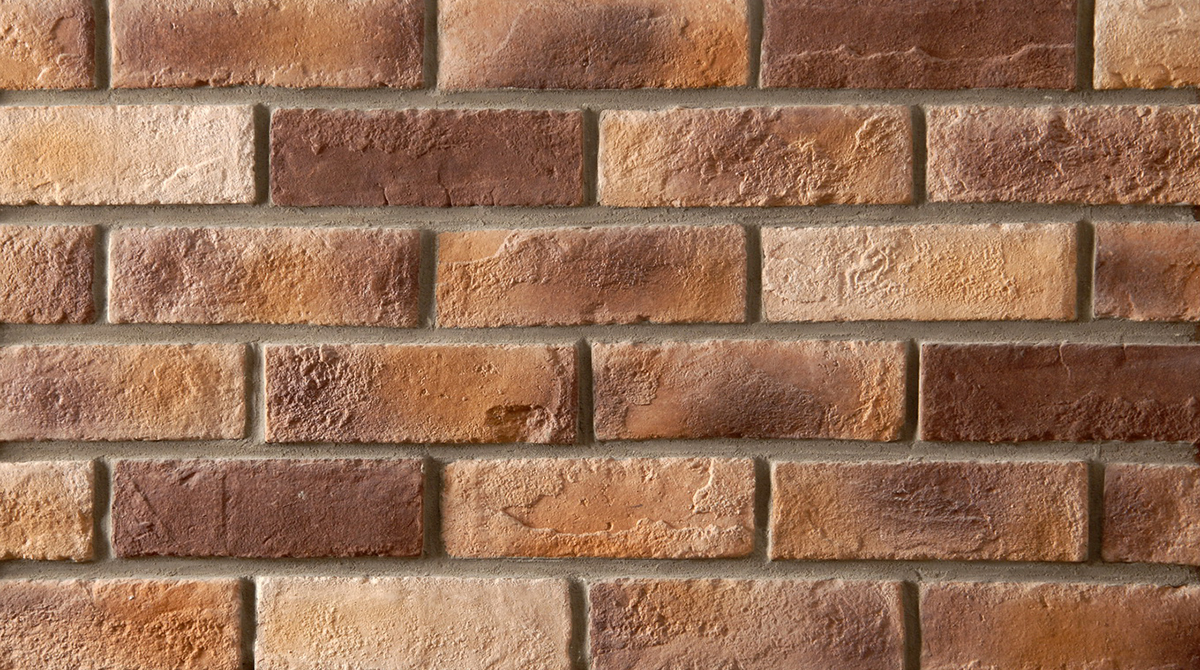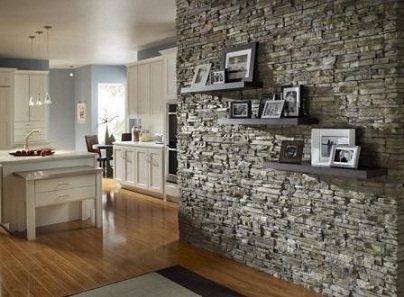History of Stone Veneer
Stone veneer is used as a protective and decorative covering for exterior or interior horizontal walls and surfaces. The veneer is typically 1 inch thick and must weigh less than 15 pounds per square foot (73 kg/m2) so that no additional structural supports will be required. Manufactured stone veneer is a decorative building material manufactured to replicate the look of natural stone. The names artificial stones, stacked stone veneer, manufactured stone, and flexible stone veneer are also used for stone veneer.
Thin stone veneer was first developed in the late 19th century, but there were materials developed much earlier that foreshadowed the use of stone veneer. Parts of the Roman Coliseum were made out of marble veneer that can no longer be seen.
In fact, the holes in structure of the Coliseum are from the anchors of the veneer panels. Structures throughout the Roman Empire were made in part out of stone blocks, including the Segovia aqueduct in Spain, which was made out of granite blocks. People in the Roman Empire also developed concrete (out of cement and rubblestone), which helped builders expand structures greater than before. Stone was used as a part of the facings of these new concrete structures in the Roman Empire, as seen in the Coliseum.
Modern stone veneer first made its appearance in the late 1800s. The oldest of modern stone veneer product is now disintegrating. It was cut into thick portions and then hand tooled into the appropriate panels; the stones that were used were “granite, marble, travertine, limestone, and slate.” Early in its development, thin stone veneer only had the capabilities to be utilized in areas such as the inside of buildings, street-level facades and storefronts.
One-and-½ inches became the common thickness of stone veneer in the 1930s. Panels of stone veneer were generally installed via mortar techniques, with steel rods drilled into the edges of panels providing support. The utilization of thin stone veneer for complete facades of buildings popped up in the 1940s. Stone veneer construction became much of what we see today in the 1950s. Transporation improved, so stone veneer was transported more efficiently and at lower costs than ever before. Methods to attach veneer to steel were developed; diamond-bladed tools became popular for developing thin stone veneer, while elastomeric sealant began to replace mortar techniques in the construction process. Thin stone veneer in the 1960s became more of a standardized look – in fact, standard education on stone veneer became available in The Marble Engineering Handbook and Marble-Faced Precast Panels, which were published by the Marble Institute of America and National Association of Marble Producers.
As stone veneer panels got thinner in the 1960s, the properties of the stone used became more important in order to compensate (as did safety considerations). Concrete as an aid to stone veneer continued to develop, as “in order to eliminate bowing, cracking, and staining of the veneer.”
“Diamond-studded cables” were used to cut Italian marble into the necessary slabs as a part of an era of specialization in the 1970s. A 1976 patent shows that the stone material of composite stone veneer could be finished and developed in such a fashion that “it does not have the appearance of being a part of a composite stone veneered product.”
The thickness of stone veneer was able to be cut to a thickness of 1⁄8 inch (3.2 mm) in the 1980s because of improvements in technology. The thickness of typical thin stone veneer was three centimeters by the early 2000s. Anchors of support were provided by a specific type of stainless steel or “of aluminum with a non-corroding material separator between the metal and stone.” These anchors are attached to the back of the panels with a rod.





Voiko kiviviilua käyttää saunan kiukaan takana olevassa seinässä?
Hi, sorry we only supply manufactured culture stone, if you need, please feel free to send inquiry to sales@leiyuan.cn